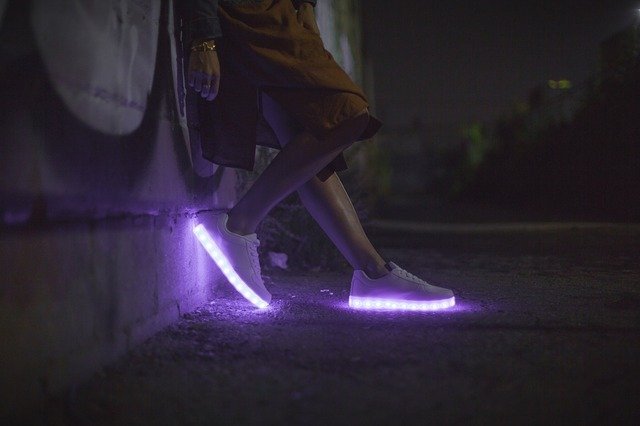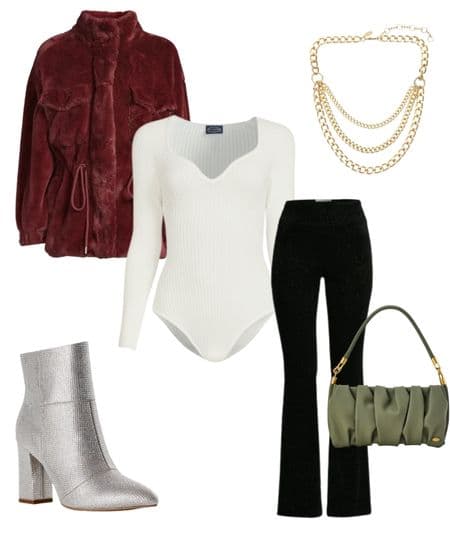How To Find The Best Fit For Ski and Snowboard Pants
Before hitting the slopes it’s essential to consider your attire! Trust me when I say there is nothing worse than spending your day cold and wet because you wore the wrong snow pants!
I know that finding the perfect fit for your ski and snowboard pants can be a challenge. But good news – I’m here to help you with tips to ensure your ski attire is not only cute but functional and comfortable as well!
Whether you’re a seasoned pro or just starting out, the tips in this psst will help you find ski pants that’ll keep you warm, dry, and comfortable during cold days on the mountain.
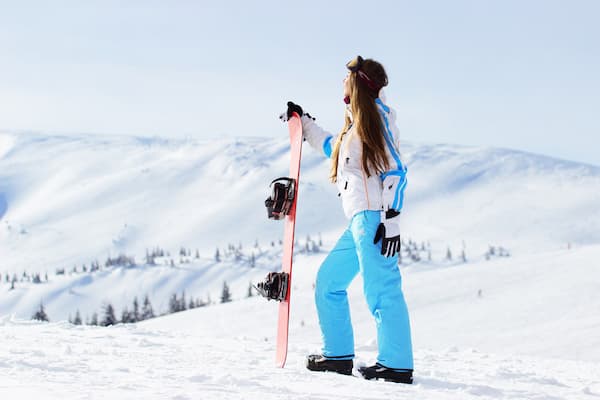
Ski Pants vs. Ski Bibs
Before we dive into the fit ski pants, let’s chat about the difference between ski pants and ski bibs as you’re certain to come across both of these during your search for the perfect pants.
Ski pants are essentially a regular pair of (waterproof) pants designed for skiing, snowboarding, or other snow activities.
They most often have a high rise waist and features like waterproof zippers and button closures.
Ski bibs, on the other hand, are like overalls with an extra layer that goes over your chest and has adjustable shoulder straps. Both ski pants and ski bibs most often have snow gaiters built into them.
The choice between the two comes down to personal preference, however, ski bibs tend to offer better heat retention and protection from wet snow because they cover the abdomen and chest area.
You can also easily throw a ski jacket over your bib and a light base layer on more mild days.

Are Ski Pants and Snowboard Pants the Same?
During your shopping trip for snow pants, you might also come across snowboard pants in addition to ski pants and wonder if they’re the same.
While both types of pants are designed with waterproof, breathable fabrics and insulation to keep you warm and dry, they do have slight differences.
However, they can most definitely be used interchangeably.
Snowboard pants often have a looser fit and baggier style. This allows for more freedom of movement. Ski pants, on the other hand, usually have a slightly slimmer fit.
Ultimately, the functions of the pants are the same (to keep you warm and dry) so the choice of pants will depend on your personal style and activity.
Waterproof vs Water-resistant Pants
One more thing you’ll want to keep in mind when shopping for ski pants is whether or not the ski pants are waterproof or water resistant. I know – so many things to consider!
It’s important to know the difference between the two to ensure you’re comfortable and dry all day. Here’s a breakdown of the two:

Waterproof Ski Pants
Waterproof ski pants provide complete protection against water entering. This makes waterproof pants a great option for keeping you dry in heavy snow or extreme conditions.
Waterproof pants are rated according to their level of waterproofing, measured in millimeters (mm). A higher rating indicates the more waterproof protection they provide
As a general guideline, keep in mind that a 10,000mm rating offers good protection for moderate snowfall, while a 20,000mm rating offers the best protection for heavy snow or rain.

Water-Resistant Ski Pants
Water-resistant ski pants, on the other hand, offer a lower level of protection against moisture when compared to waterproof ski pants.
Water-resistant material can repel light rain or snow but won’t hold up to prolonged exposure to moisture such as a long day on the slopes in the snow.
These pants typically have a durable water repellent (DWR) coating, causing water to bead up and roll off the fabric.
Water-resistant pants are suitable for milder weather conditions or activities that generate a lot of body heat, such as hiking or cross-country skiing, due to their enhanced breathability compared to fully waterproof pants.
Which One Should You Choose?
If you plan on skiing or snowboarding in heavy snow or wet conditions, definitely invest in waterproof ski pants.
However, if you’re an occasional skier or snowboarder who most often skis in mild weather conditions, you may be able to get away with water-resistant ski pants.
These offer some protection against the elements while providing better breathability for warmer days on the mountain.
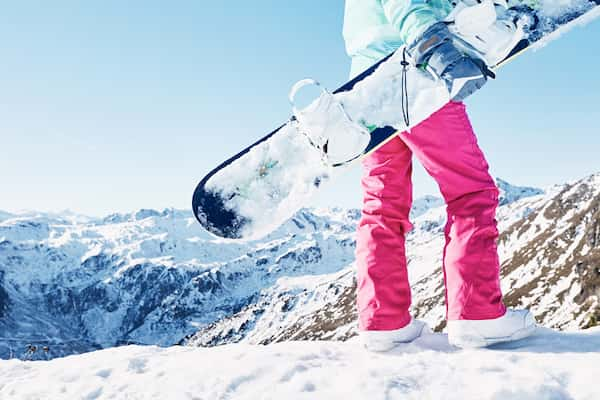
How Should Ski Pants Fit
Here are some tips to help you find the perfect pair of ski pants:
First, start by checking the size chart of the brand you’re interested in, keeping in mind that sizing can vary between brands.
You’ll want to measure your waist size and hip circumference, as well as the inseam length, for the most accurate fit – we’ll get to that below.
- Waist: Ski pants should sit at your waist, slightly above your hips. Look for pants with adjustable waists, belt loops, or elastic bands so that you can adjust them for a snug fit.
- Hips and thighs: Ski pants should have enough room around your hips and thighs to allow for a base layer or long underwear underneath.
- Inseam: You should measure the inseam to reach to the bottom your ankle bone and then add another 4-5 inches to ensure they will be long enough to cover your ski boots.
You’ll find that the snow gaiters built into the pant cuffs will keep snow out of your boots.
- Fit styles: Women’s ski pants come in various fits, including slim, regular, and relaxed. Consider your body type and personal preference when choosing the fit style.
- Movement: The best ski pants will give you full range of motion for all of your winter activities without feeling too tight or too loose. I recommend trying squatting, lunging, and walking around to make sure the pants provide enough flexibility for your liking.
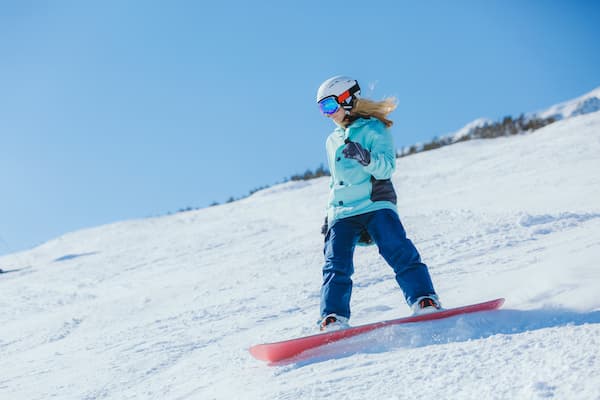
Different Types of Ski Pants
Ok, now let’s dive into the different types of ski pants available:
- Insulated ski pants: Insulated pants come with an inner layer of, you guessed it, insulation to keep you warm on especially cold days. These pants often have a relaxed fit and are great for alpine skiing and backcountry skiing.
- Shell pants: These pants are made of a durable, waterproof fabric and are perfect for extremely wet conditions and more mild days than you would choose insulated pants for. They provide an outer layer of protection without the extra insulation, so you’ll stil want to wear a good base layer underneath them.
- Softshell ski pants: These offer a great balance between shell pants and insulated pants as they provide warmth and water resistance. They are made up of a stretchy, breathable fabric that’s perfect if you’re looking for a more comfortable, form-fitting pant.
- 3-in-1 ski pants: 3-in-1 pants are versatile in that they come with a removable inner layer that can be worn separately or all together. This gives you the option to adjust your level of insulation based on the weather with just a single pair of pants, win-win!
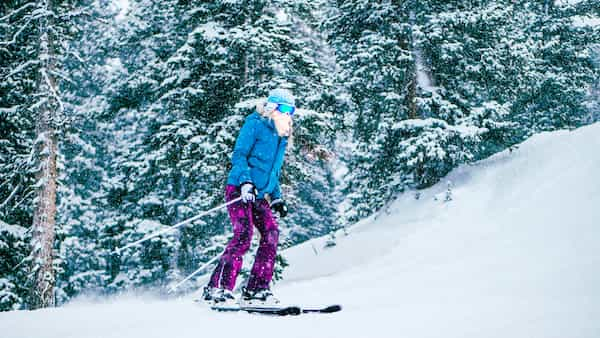
Slim vs Regular vs Relaxed Fit
Slim-fit snow pants provide a tailored, form-fitting look while still allowing for a full range of motion. While they are great for a sleek, fashionable appearance you likely will not be able to wear as many layers with them.
Regular-fit snow pants offer a great “in-between” option with a comfortable fit that isn’t too tight or too loose. This fit works well for most body types and allows you to layer without restricting movement.
Relaxed-fit snow pants are a much looser cut and are great if you are looking for extra comfort and freedom of movement. You can most often wear multiple layers for added warmth with relaxed-fit pants.
Taking Accurate Measurements for Ski Pants
To find the perfect fit for your ski pants, start by taking a couple of key measurements.
These include your inseam, waist, and hips. Here’s how to properly take these measurements:
Inseam
The inseam measurement refers to the length from the crotch to the bottom of the pant leg.
To measure your inseam accurately, stand with your feet slightly apart and use a flexible measuring tape to measure from the crotch seam (where the front and back seams meet) down to around your ankle bone.
Remember, for ski pants, add an extra couple of inches to your usual inseam length to ensure the pants cover your ski boots.
Waist
To properly measure your waist, stand up straight and wrap a flexible measuring tape around the narrowest part of your waist, about an inch or two above your belly button.
You’ll also want to consider that you may be wearing base layers or thermal underwear beneath your pants, so leave some extra room for that.
Hips
Measuring your hips is very similar to measuring your waist. Stand with your feet close together and find the measurement of the fullest part of your hips.
Best Ski Pants for Women
So now that you know how to properly measure yourself for ski pants and what the difference is between all the styles, let’s take a look at some of the best ski pants available.

The North Face Freedom Insulated Pants
These versatile and stylish ski pants offer great waterproofing and insulation, ensuring you stay warm and dry on the slopes.
The adjustable waist and inner thigh vents provide a comfortable, customizable fit.
Helly Hansen Legendary Insulated Pants
As the name suggests, these pants are a popular choice due to their excellent waterproofing, breathability, and insulation. They offer a classic and flattering fit with adjustable waists and boot gaiters.
Burton Women’s Fly Pants
Another budget-friendly option, these snowboard-inspired ski pants have a relaxed fit for better mobility and come with a waterproof, breathable fabric.

The North Face About A Day Insulated Snow Pants
The great thing about these snow pants is that they’re great for skiing and snowboarding, but they have a street-style look, making them both functional and fashionable.
They feature a dryVent shell, recycled insulation, and sealed seams to keep you warm, plus they come in 8 different colors and several length options.

If you need something a bit more budget-friendly, these pants should do the trick. Although incredibly lightweight, these pants will keep you warm on even the coldest day thanks to the Thermatech insulation.
They also feature a reinforced ankle to keep you dry while also preventing the hem of your pants from damage.
FAQs
Are ski pants supposed to be tight on thighs?
While ski pants can certainly be snug on your thighs especially depending on the type of fit you opt for, they should never be uncomfortably tight. This is especially true before you have any base layers on.
Can I wear regular pants for skiing or snowboarding?
Wearing “regular pants” such as jeans is not recommended for winter or snow sports. Ski and snowboard pants are specifically designed with waterproof materials and insulation to keep you warm and dry during all of your activities.
Should ski pants be a little longer?
Yes! After measuring your inseam, you’ll want to add in a couple extra layers to allow for the pants to cover your boots. Also, be sure to look for pants with snow gaiters to keep snow out of your boots.
Should I wear a belt with my ski pants?
Assuming your ski pants have belt loops, a belt can definitely help ensure a good fit, especially if you have a smaller waist. Adjustable waists and elastic bands are other options for a snug fit.
Are ski pants supposed to go over pants?
If the weather is cold enough that you need to layer you can certainly wear your ski pants over a base layer. Opt for moisture-wicking, breathable materials and avoid materials that hold on to moisture as it can make you feel colder.
How do I care for and maintain my ski pants?
Follow the care instructions on the label. This will typically include machine washing on a gentle cycle and air-drying. You’ll also want to avoid using fabric softeners, as they can reduce the effectiveness of the waterproof and breathable fabric.
There you have it! Remember that the best ski pants for you will depend on your personal preferences, fit, and the specific features you need for your skiing adventures. Be sure to consider factors such as insulation, waterproofing, and breathability when making your decision.


